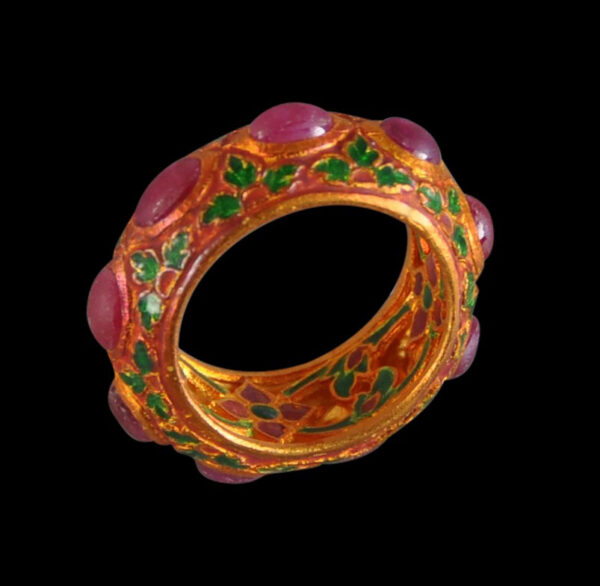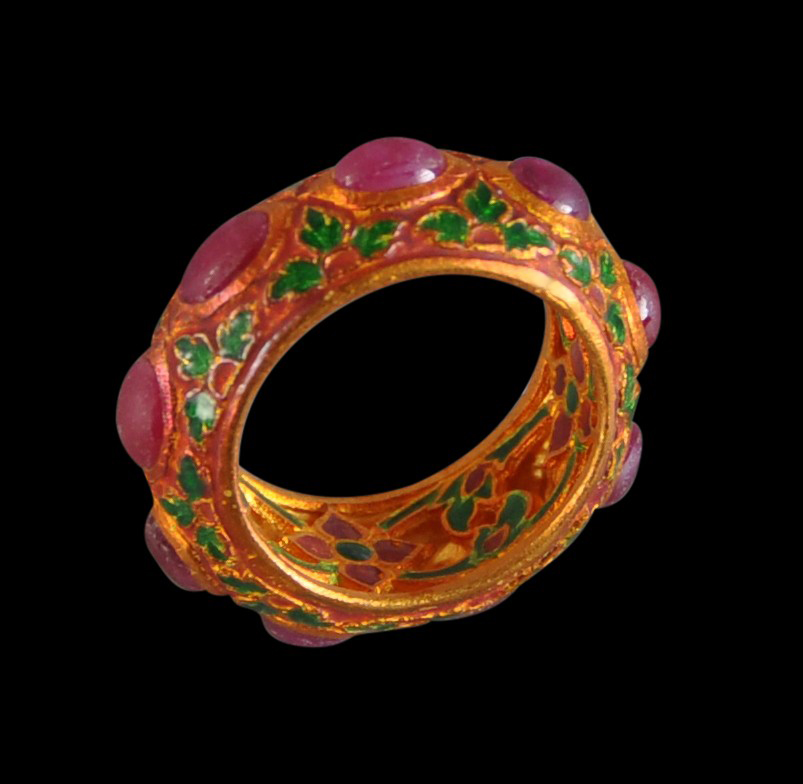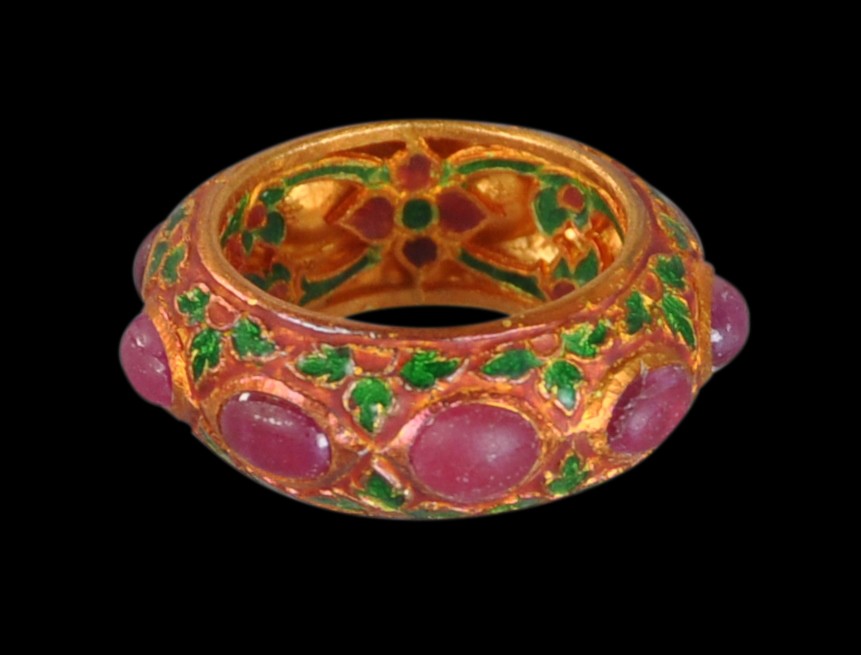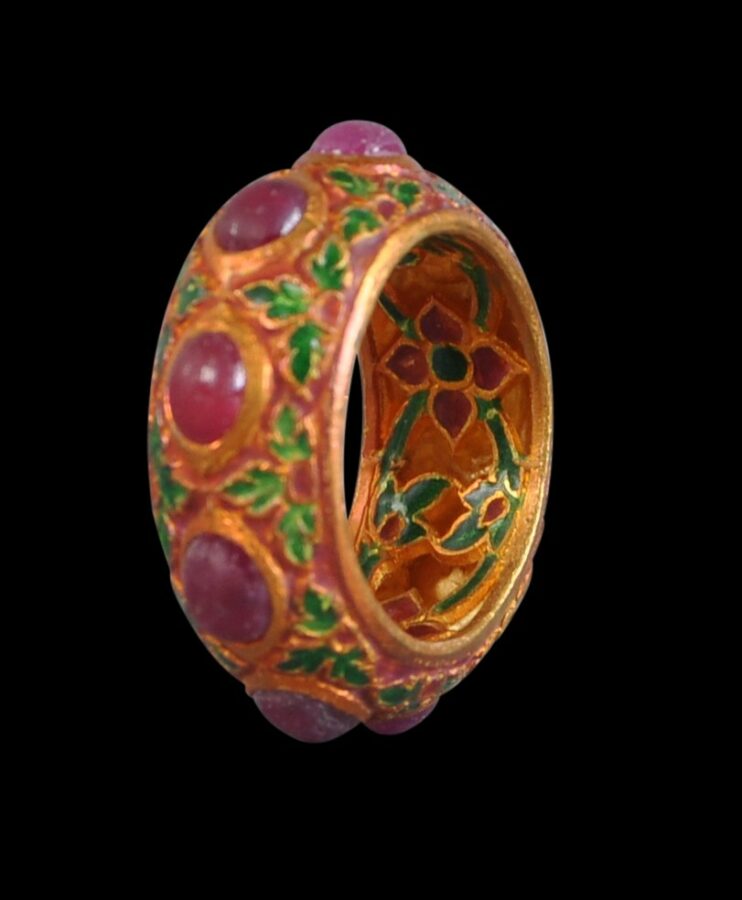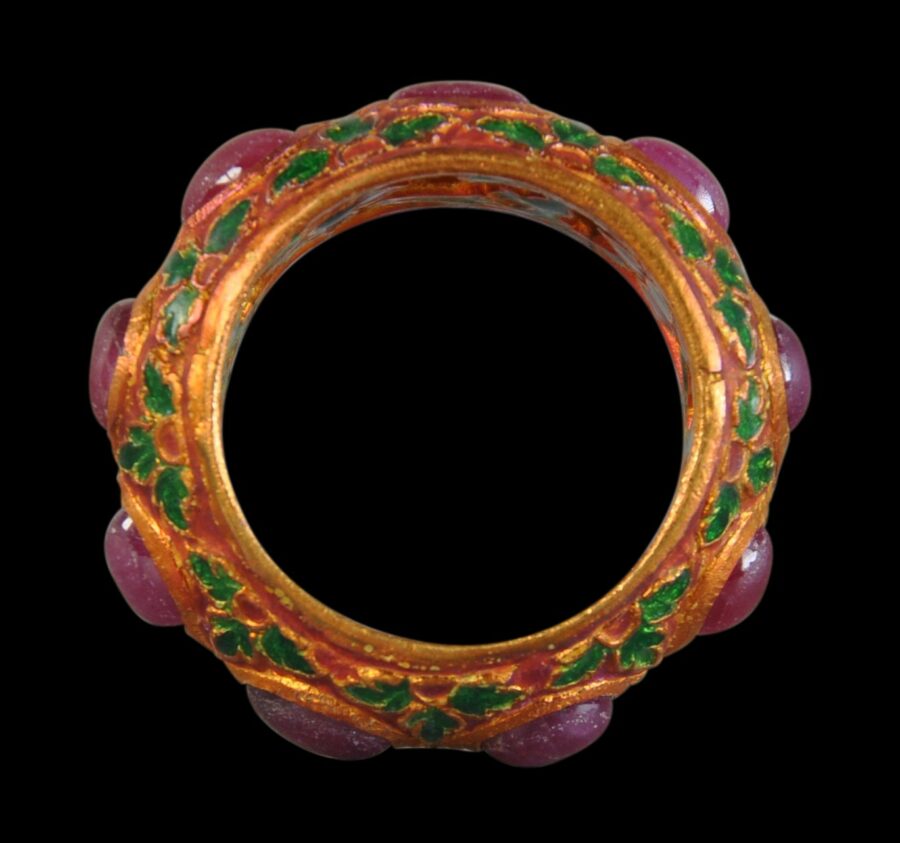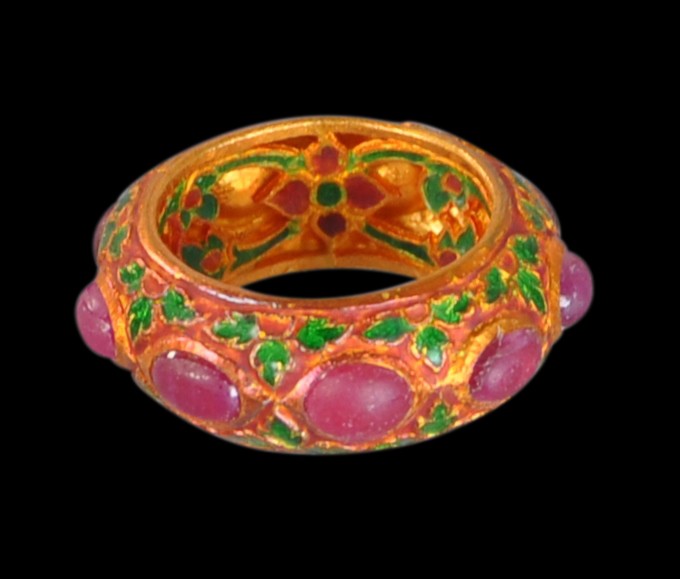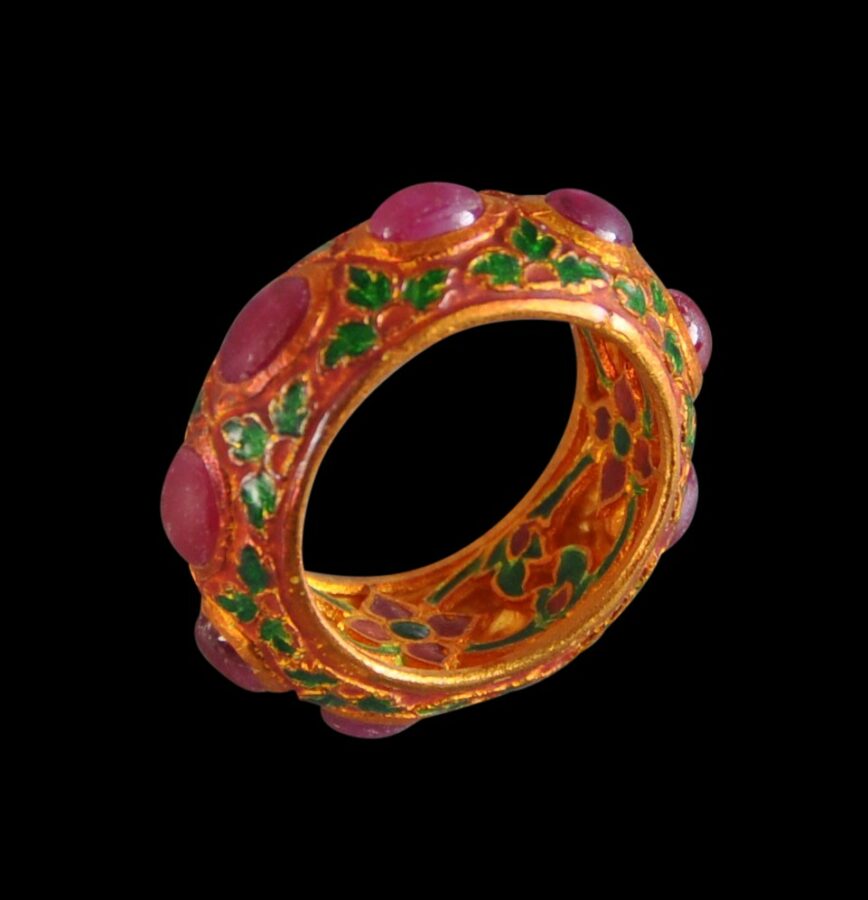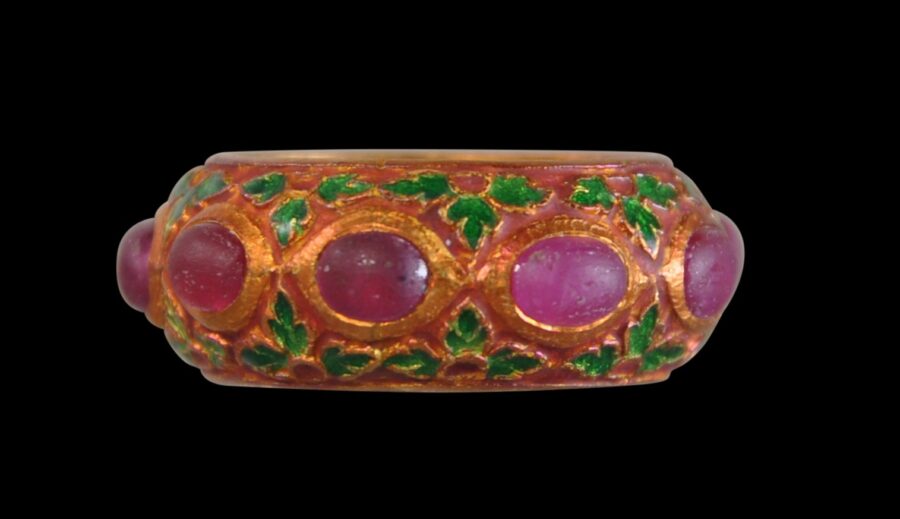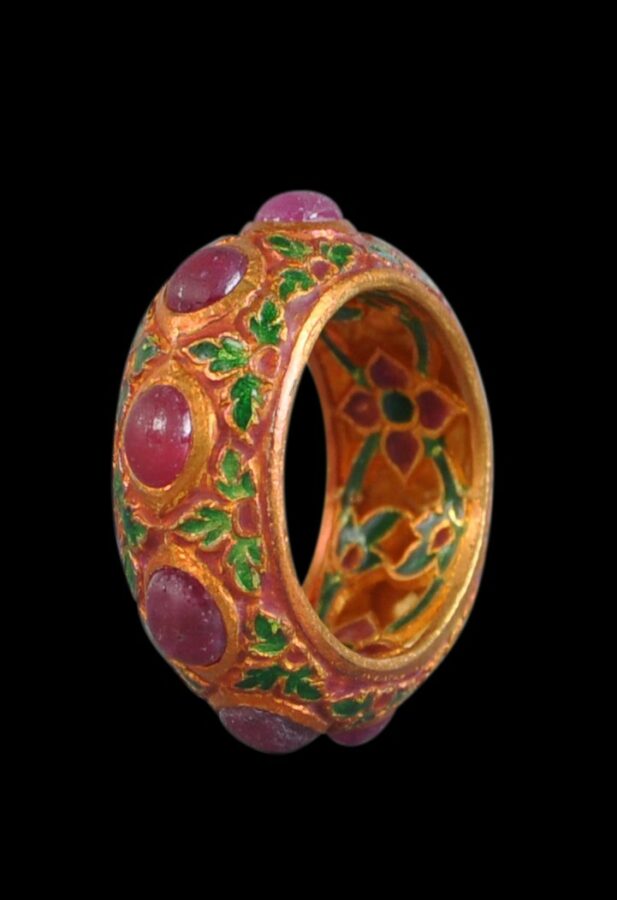This exquisite gold ring originally from a minor palace in Bangkok and designed for a member of the extended Thai royal family, has been decorated with green and red enamel, both on the outside and, remarkably, on the inside of the hoop, which is also pierced on the interior, and set with nine ruby cabochons. Ruby is the precious stone associated with the sun, the ‘planet’ with which kings tended to be associated, so a fitting gem for a ring to be worn by a prince. In Thai, the ruby (taub tim, literally, ‘pomegranate seed’) is known as the ratanachat – ‘the king of gemstones’ – so another allusion to royalty.
The enamelwork, which is especially intricate and intact, has been arrayed as small green and red flower motifs on the outside and much larger flower motifs on the inside.
The nine rubies are evenly matched. The number nine is considered the most fortuitous number in Thailand – when said in Thai the word for ‘nine’ also sounds like the Thai word for ‘moving forward’ or ‘progress.’ Rubies were and still are mined in Thailand, most particularly in Thanthaburi and Trat in central Thailand.
The kings of Siam participated in elaborate processes of gift exchange with other heads of state around the world as well as with other kings, princes and sultans closer to home. This called for the manufacture of significant quantities of gold and silver luxury goods of which jewellery was a component.
Accordingly, a ring of similar form was part of the 1861 diplomatic gifts presented to Napoleon III at Fontainbleau by the ambassadors of King Mongkut of Siam. That ring is illustrated in Bruley (2011, p. 89) and is in the collection of the Chateau de Fontainbleau, near Paris. A related ring is illustrated in Richter (2000, p. 94), which is described by the author as an ‘outstanding’ example of 19th century Bangkok jewellery.
Also, several 19th century Siamese kings were especially polygamous (King Mongkut [Rama IV] and 43 consorts and King Chulalongkorn [Rama V] had 153) and this lead to a proliferation of royals in 19th century Bangkok. As a consequence, many secondary palaces were established and each minor royal household required its own princely regalia and possessions. All this meant that Bangkok became home to particularly skilled gold and silversmiths given all this significant demand.
Today in Thailand, the overall number of Thai royals is contracting. The Thais followed the Chinese system of nobility whereby the descendants of a king were awarded royal titles, but these fell by a rank with each generation so that eventually, most descendants will become commoners. With this goes the loss of privilege and the dilution of wealth. As a result, items such as this ring become available on the open market. The availability of such items was helped in the 1930s and 1940s when the Thai monarchy relocated to Switzerland. Other family members also left Siam/Thailand and settled in Europe and as a consequence, princely Thai items occasionally can be found in Europe.
The ring here is wearable, stable, and historically important. There are no losses to the enamel work. It is in excellent condition.
Above: Jean-Léon Gérôme, ‘Reception of the Siamese ambassadors by the Emperor Napoleon III at the Palace of Fontainebleau, June 27, 1861′ ( Public domain, via Wikimedia Commons).
Scroll down for more images.
References
Bruley, Y., et al, Le Siam a Fontainbleau l’Ambassade du 27 Juin 1861, Chateau de Fontainbleau, 2011.
Richter, A., The Jewelry of Southeast Asia, Thames & Hudson, 2000.
Salmon, X., et al, Chateau de Fontainebleau: Le Musee Chinois de l’Imperatrice Eugenie, Chateau de Fontainebleau, 2011.


